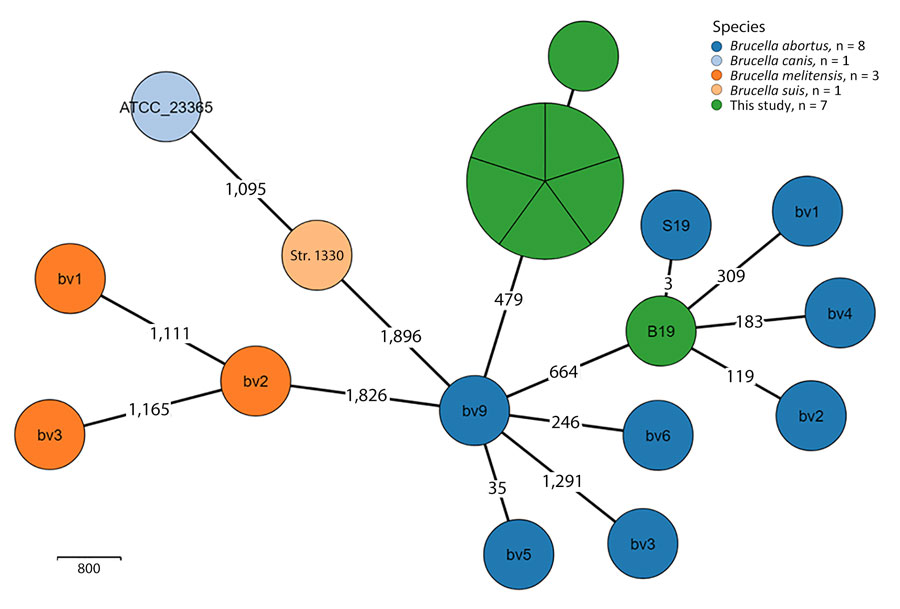Volume 31, Number 4—April 2025
Dispatch
Reemergence of Brucella abortus, Israel, 2021
Figure 1

Figure 1. Minimum-spanning tree of 7 study isolates and 13 reference genomes in study of reemergence of Brucella abortus, Israel, 2021. Tree shows core-genome multilocus sequence typing analysis of 7 study isolates of B. abortus (5 bovine isolates, 1 clinical human isolate, and 1 B19 vaccine strain) and 13 reference Brucella genomes (Appendix 1 Table 3), using an ad hoc scheme of 2,424 loci (at 95% genome presence threshold). Node size is proportional to the number of genomes. Numbers denote the number of differing alleles.
1These authors contributed equally to this article.
Page created: January 17, 2025
Page updated: March 24, 2025
Page reviewed: March 24, 2025
The conclusions, findings, and opinions expressed by authors contributing to this journal do not necessarily reflect the official position of the U.S. Department of Health and Human Services, the Public Health Service, the Centers for Disease Control and Prevention, or the authors' affiliated institutions. Use of trade names is for identification only and does not imply endorsement by any of the groups named above.